Business Platinum Card from American Express
130,000 MR points
And then there were two…
September 1, 2019 marked the end of one of the most well-known frequent flyer program sweet spots among Canadian travellers: the three-stop Aeroplan Mini-RTW, in which Aeroplan’s generous stopover policy allowed you to visit three cities around the world for the price of one.
The policy has now changed to allow for one stopover or one open-jaw only, meaning that you can, at best, stop in two places for longer than 24 hours on a single Aeroplan itinerary.

(You can imagine how sad of a moment it was for me when updating my Aeroplan Mini-RTW guide, where I had to clear out all those fun three-stop trips I had taken in the past from the Examples section.)
So what now for Aeroplan? How can we make the most of what we’ve got with the program (keeping in mind that future changes are still likely in the lead-up to the new Air Canada loyalty program)? And what other sweet spots should we be turning to?
First of all, as I had confirmed with an Air Canada spokesperson shortly after the changes were announced, any bookings made before September 1, 2019 can still benefit from the old stopover allowance if you make changes to the booking.
I had also shared a few strategies that you might employ in order to push the travel date all the way into 2021, by making changes after travel has commenced.
Furthermore, there’s been at least one data point that if you have an existing Aeroplan booking of any kind – even if it’s a simple one-way or round-trip booking with no stopovers – you can call in, pay the change fee, and have it rearranged into a round-trip with two stopovers under the old policy.
You may need to speak to a few agents and escalate to the supervisor a few times, but by virtue of your ticket having been created before September 1, 2019, it should be subject to the old stopover policy even if it didn’t take advantage of that policy when it was first booked.
This only makes sense – it’s entirely fair that your ticket remains subject to the rules that were in place at the time it was created.
If you’re regretting that you missed the deadline for three-stop Aeroplan trips, but you have existing bookings that are simple one-ways or round-trips, this could be a potential backdoor solution!
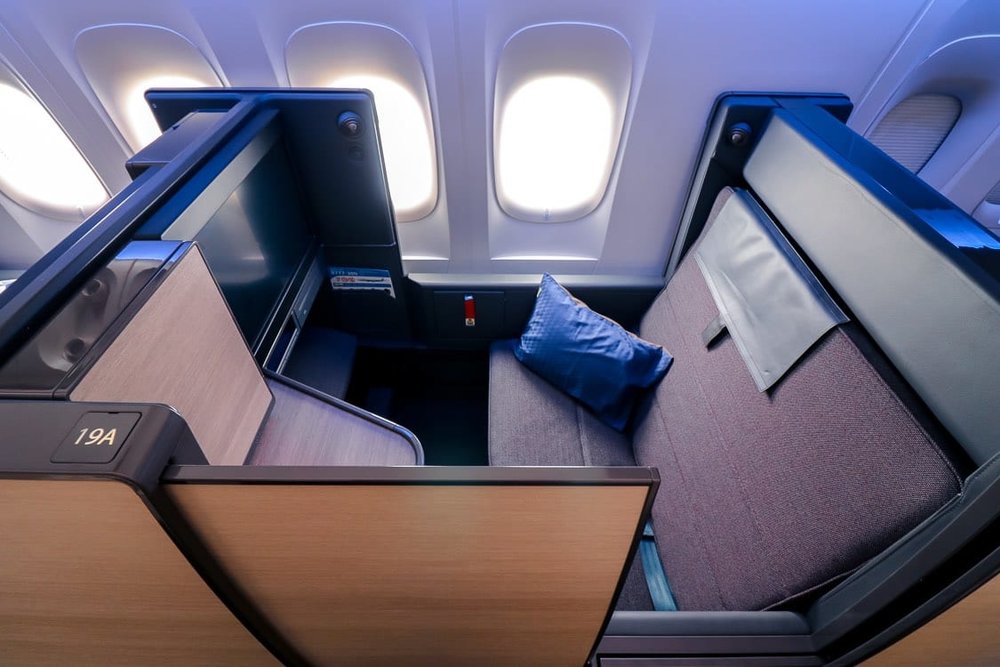
Now, let’s have a bit of perspective here. I’ve been hugely enthusiastic about the Aeroplan Mini-RTW over the years because it’s so perfectly aligned with my own travel style, but we gotta remember that, according to Air Canada, ultimately only 0.3% of Aeroplan bookings ever took advantage of the two stopovers or the one stopover and one open-jaw.
Most people are redeeming for one-ways and round-trips, and if you primarily use Aeroplan miles for those kinds of redemptions in premium cabins, you’re still squeezing amazing value out of the program. Aeroplan miles are easily attainable in large quantities here in Canada, so you’re still getting a spectacular discount on business class and First Class flights, even if you aren’t making use of any stopovers or open-jaws.

While there was plenty of frenzied trip-planning in the lead-up to the September 1 rule change, the reality is that much of that last-minute rush was probably motivated by people’s FOMO (fear of missing out) with regards to taking advantage of this amazing sweet spot before it goes away.
I know that because I felt the same way as I worked on perfecting my two final three-stop Mini-RTW trips around the world – and even considered adding a third one, right at the death, but decided against it for reasons I’ll touch on below.
Aeroplan miles remain the most valuable currency for Canadians looking to travel internationally, and even the value you get out of a single one-way booking to Europe in business class will be tough for other loyalty programs to match.
(And don’t forget that the initial announcement had mentioned that Aeroplan were merely temporarily suspending the old stopover allowance. Whether that means they’re merely pausing it to implement a more streamlined technical solution, or that they’ll reintroduce it in the future but in a much less favourable form, only time will tell…)
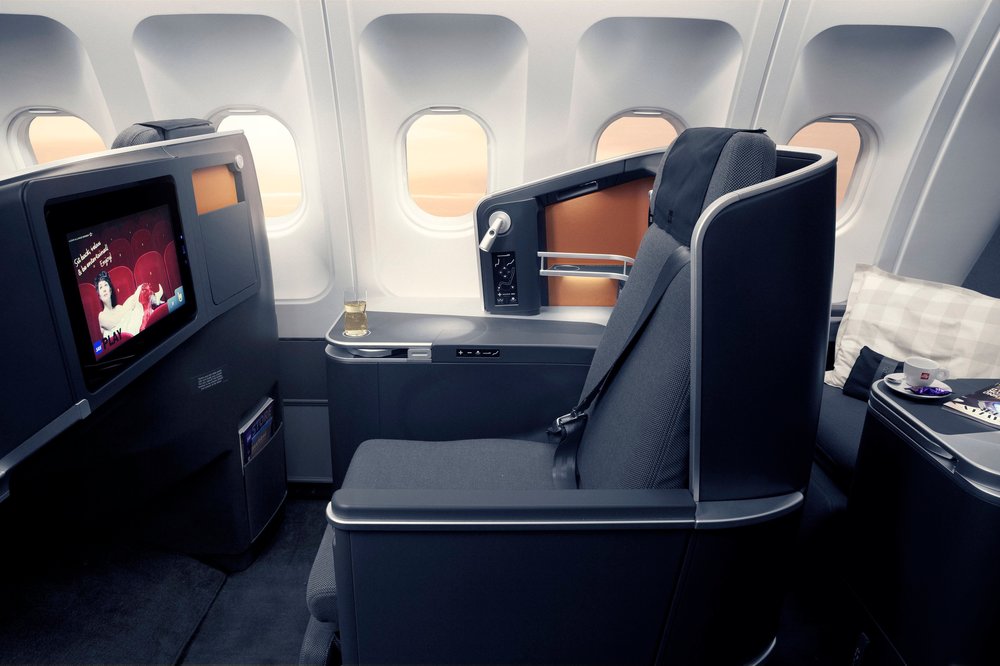
Now that we’re only allowed one stopover or one open-jaw on round-trip redemptions, how can we make the most of what we’ve got and achieve outcomes as close as possible to the “good old days”?
Even among people who redeemed miles for Mini-RTWs in the past, many of their trips involved three stops around the world, in which at least two stops were relatively close together. These kinds of trips can continue to be booked by taking advantage of the power of “nested trips” or side-trips.
For example, I personally helped about 50 people book their Mini-RTW trips via the Points Consulting service in the month of August 2019. Among these trips, about half of them followed the pattern of Canada–Europe–Asia–Canada (in either direction), and two of the three stops would be in either Europe or Asia.
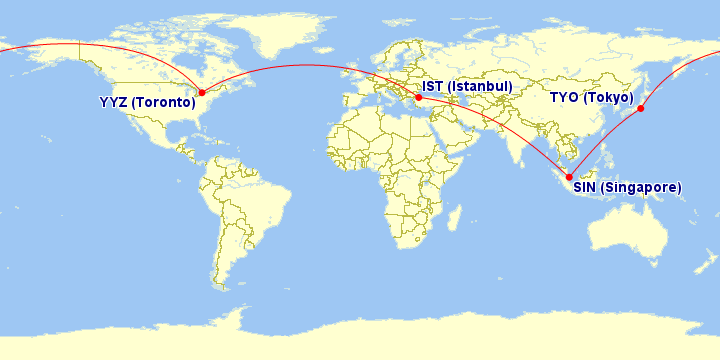
If you want to take trips that follow this type of “classic Aeroplan Mini-RTW” formula, all you need to do now is to choose your stopover in Europe and choose your final destination in Asia, and then use those cities as bases from which to take side-trips to other destinations you’d like to visit.
It’s a great time to polish off your knowledge of other loyalty program sweet spots that are accessible to Canadians, which might include:
Using British Airways Avios to book short-haul flights on British Airways and Oneworld partners like Iberia, Finnair, LATAM (the Madrid–Frankfurt route is great for a European side-trip), Cathay Pacific, Japan Airlines, Malaysia Airlines, and Qatar Airways (which has several fifth freedom flights in Asia)
Using Alaska miles to book incredibly lucrative “pseudo-round-trips” on Japan Airlines, such as Singapore–Tokyo (stopover)–Kuala Lumpur or Jakarta–Tokyo–(open-jaw)–Osaka–Bangkok, which is in fact priced as a one-way redemption at 25,000 miles in business class
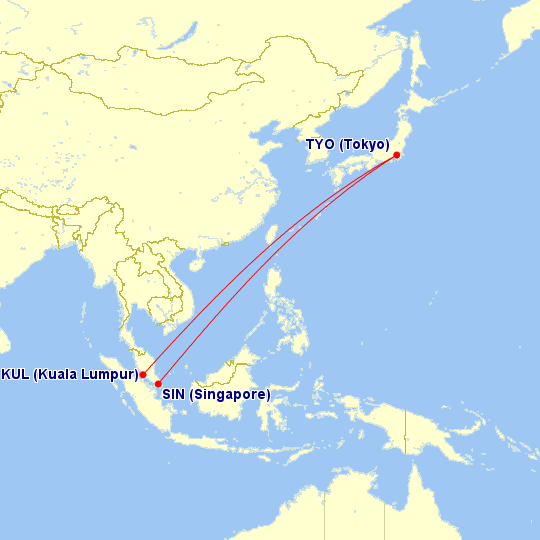
The same idea applies if you wanted to visit Europe and Australia, or Asia and Australia – you’d simply substitute the above sweet-spots for intra-Oceania sweet spots, like redeeming Avios for Qantas flights or redeeming Etihad Guest miles for Virgin Australia flights.
Furthermore, many travellers had preferred to maximize the old rules by hitting up multiple places within the same continent, such as using the two-stopover allowance to visit three points in Europe at no additional cost, or stringing together three places in South America in one journey – both of which were attainable at the very generous cost of 110,000 Aeroplan miles in business class.
Even with a reduced stopover allowance, you’ll still be able to take such trips quite easily, and you’ll only have to put a little more thought into potential side-trips in order to achieve the same outcome as before.
For example, a South America trip with an open-jaw between Bogotá and Buenos Aires gives you the ability to hop down the continent on LATAM flights using Avios, perhaps allowing you to check out Peru, Bolivia, and Chile along the way.
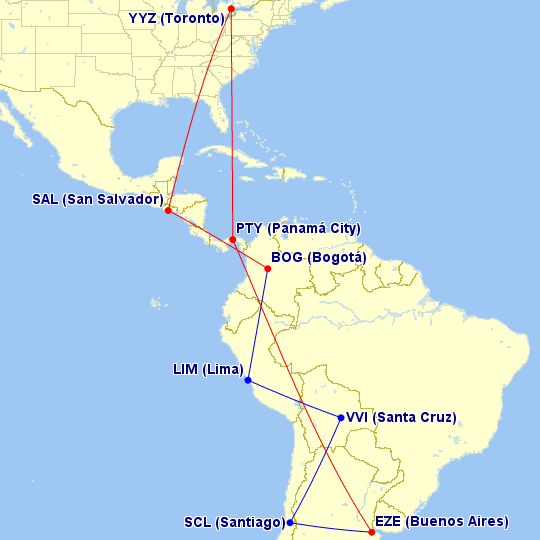
It’s really the more ambitious three-stop Aeroplan Mini-RTW routings that whisked you away to three entirely separate continents – like those trips hitting up South America, Africa, and Europe, or the crazy six-continent routings I’ve outlined over the years – that will now be somewhat unrealistic.
You’d have to only choose two of those destinations to stop for longer than 24 hours, with the remainder being limited to layovers of 24 hours or less, which may not be quite as satisfying as before.
On that note, though, keep in mind that while the number of stopovers is now limited to one, the ability to add 24-hour layovers to your itinerary remains unconstrained all the way up to the technical limit of 16 segments on a single ticket.
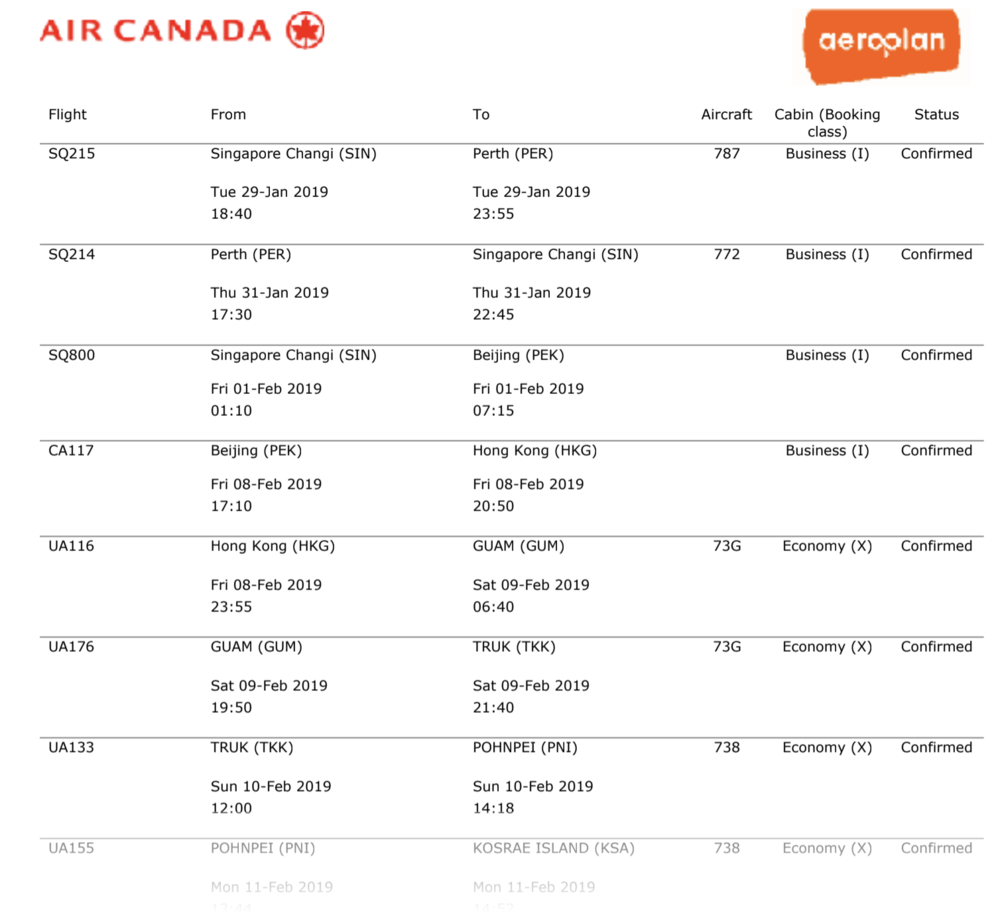
So if you’re the type of traveller who likes to fly around in different airlines and blitz through several different places around the world on a quick visit – perhaps sowing the seeds for a longer stay in the future – then the Aeroplan Mini-RTW remains an extremely powerful tool.
Over the past few months I’ve made an effort to research and shed light on some other “round-the-world” sweet spots that exist out there. In Miles & Points, you can never put all your eggs in one basket, and it’s always important to develop familiarity with different award programs so that you’re protected against the inevitable devaluations that occur.
I’ve talked about the British Airways Avios multi-carrier award chart and the Cathay Pacific Asia Miles multi-carrier award chart. Both are distance-based award charts, allowing seven and five stopovers, with the ability to add one or two open-jaws, respectively.
British Airways Avios multi-carrier award chart
multiply award costs by 2x for premium economy, 3x for business, and 4x for First

That’s immensely more powerful than even the old rules of the Aeroplan Mini-RTW, and the mileage required for these sweet spots is accordingly higher than what you’d pay with the Mini-RTW. Thankfully, both Avios and Asia Miles are easy for Canadians to earn, so that shouldn’t be too much of a problem if you’d like to stretch your miles to the maximum value through multi-stop round-the-world travel.
Cathay Pacific Asia Miles multi-carrier award chart
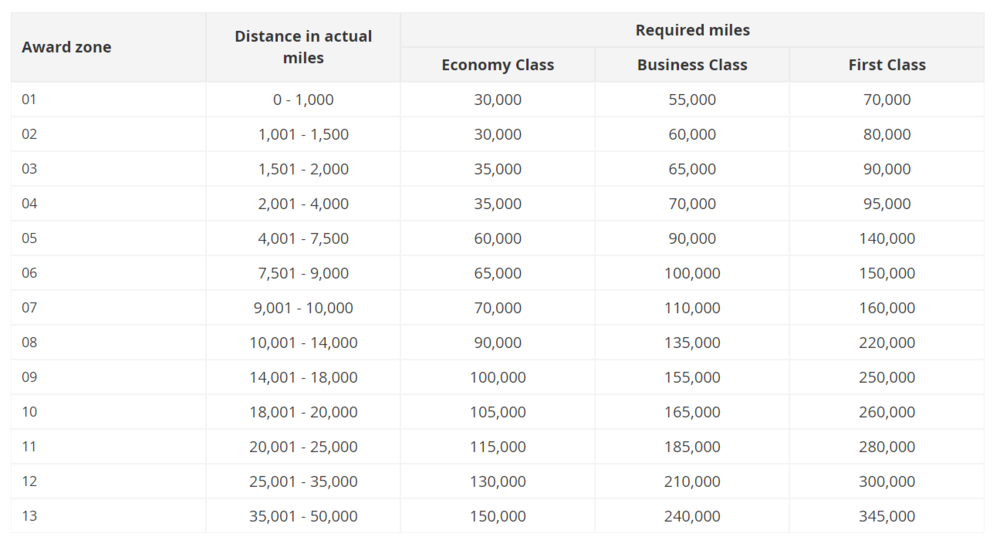
The challenge with these Oneworld round-the-world awards, though, is that the fuel surcharges they impose are quite hefty: unless you can start the whole journey in somewhere like Brazil or Japan that has fuel surcharge regulations, you’d pay around $500–1,000 in cash for the whole thing, which can quickly suck the fun out of these sweet spots.
That’s why I think the real winner lies in the ANA round-the-world award, which I just covered last week. With ANA, the surcharge situation is similar to Aeroplan in that some airlines don’t pass on fuel surcharges at all, so you have the freedom of choosing those airlines if you’re on a tight budget.
Best of all? The award chart itself is extremely reasonable for the distance flown, and you get to have eight stopovers on the itinerary. EIGHT!
ANA mileage club round-the-world award chart
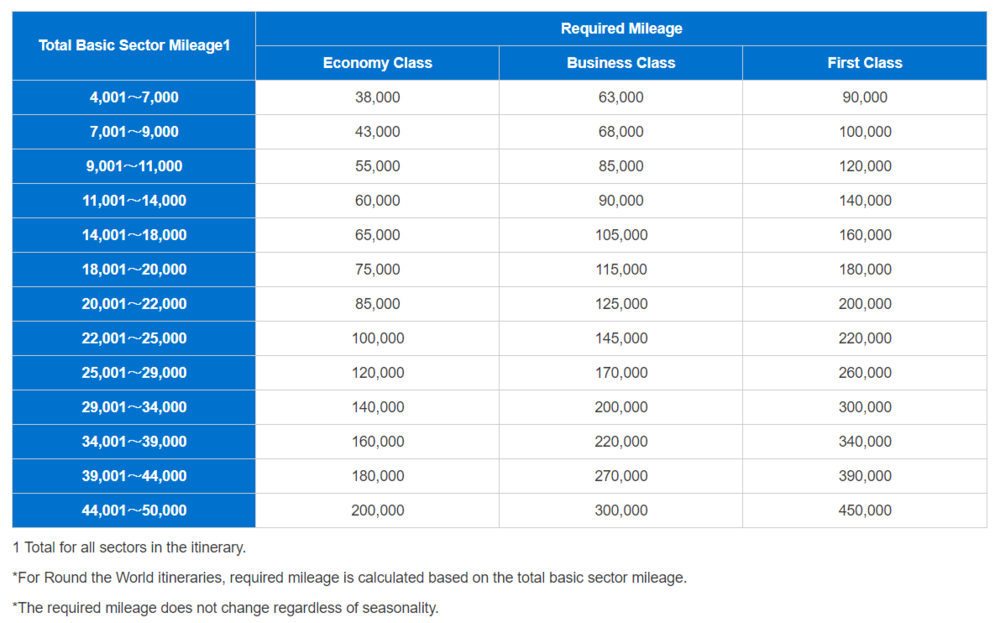
Indeed, for the summer of 2020, I’ve been planning a trip to the European Championships (in Bucharest, Bilbao, and St. Petersburg) as well as the Tokyo Olympics. While I was tempted to book a final Aeroplan Mini-RTW for this occasion, I soon realized that the ANA RTW sweet spot would be much more appealing for an extended trip like this, and so I intend to work on devising an itinerary very soon.
I’ll definitely be keeping you guys up-to-date along the process, so that we can work together on understanding this powerful but as yet underused sweet spot.
The only downside here is that the ANA Mileage Club program requires a little bit more work for us to access as Canadian points collectors. ANA miles aren’t difficult to collect per se, but it’ll most likely require you to get started with US credit cards and dabble with transferring Canadian MR points to the US. That’s significantly more work than firing up your Amex Canada dashboard and transferring points to Aeroplan at 1:1 instantly.
So the question is, how badly do you want your round-the-world trips?
There’s no denying that the reduction in Aeroplan’s longstanding generous stopover policy is sad news all around. For now, Aeroplan continues to deliver significant value for travelling in premium cabins, and its one-stopover policy can still be useful for taking creative trips to multiple destinations, but we do continue to watch anxiously for any future Aeroplan changes looming on the horizon.
Ultimately, though, an enduring truth of this game we play is that no matter what happens to a single sweet spot within a single award program, there are always, always, more opportunities lying in wait. With the future of Aeroplan looking uncertain, now’s as good a time as any to squeeze value out of your Aeroplan miles while learning and understanding more about the many other programs out there.
I always love to hear your positive approach to the game Ricky! Im very resourceful in my every day living and also learning to integrate that into this game. I didnt book a mrtw for my own reasons and I dont feel like I missed out on anything. As you pointed out there are always options and sweet spots to cater to ones needs and its all about tapping into the options I believe. Thank you for always presenting information from a positive and encouraging point of view. Always appreciated!
Marlene
"And don’t forget that the initial announcement had mentioned that Aeroplan were merely temporarily suspending the old stopover allowance. Whether that means they’re merely pausing it to implement a more streamlined technical solution, or that they’ll reintroduce it in the future but in a much less favourable form, only time will tell…"
I’ll be you any amount of money that if it does get reintroduced, it’ll be on much worse terms.
When will you be posting a video to explain how to book these Mini-RTW?
I’ve tried looking at business flights to Japan and Melbourne but only come up with Air Canada results to/from Canada 🙁
well, by the time i got decent AP miles accumulated for good 6 continet trip that i was eying since you posted, but due to this mad rush i ended up burning them very bad layovers and some open jaw(YYZ-CMN-PER-OJ-MNL-YYZ) with hefty taxes ($585). but happy to see that hobby can be continued with new friends as suggested in this post. will keep an eye.
btw..i ended up having an OJ between PER and MNL during xmas holidays and have some 90k AVIOS and some MR and AP left..wanted to know your take on to go with cash tickets are use the above points to maximize the value. basically i wanted to cover PER-MEL-AKL-SYD-MNL..2 days at each city. i am open for different combinations as long as i can stay NYE in SYD before heading to MNL.
Appreciate any tips
What a great post! It only goes to say that you have to work with what you have. The aeroplan mini round the world is still possible but “maybe with a little help from your friends” ie Avios and Alaska.
The ANA idea is a good idea but for the lazier group among us, we will have to be dragged kicking and screaming into US credit cards.
As long as we do not give up all hope!
That will be my job – to drag you kicking and screaming 😉